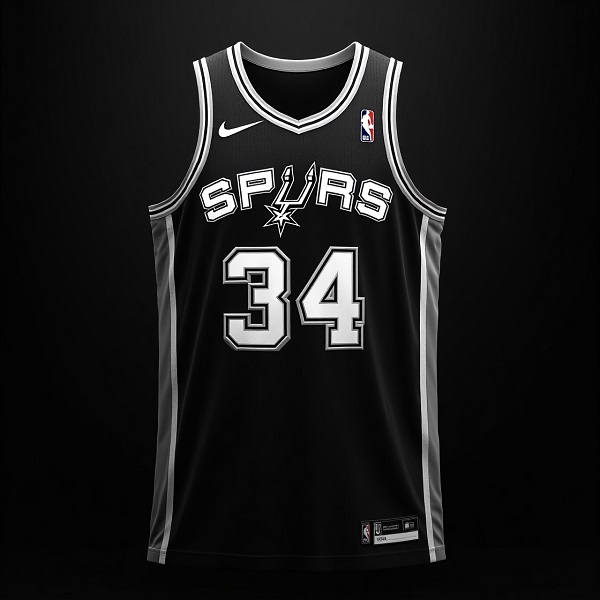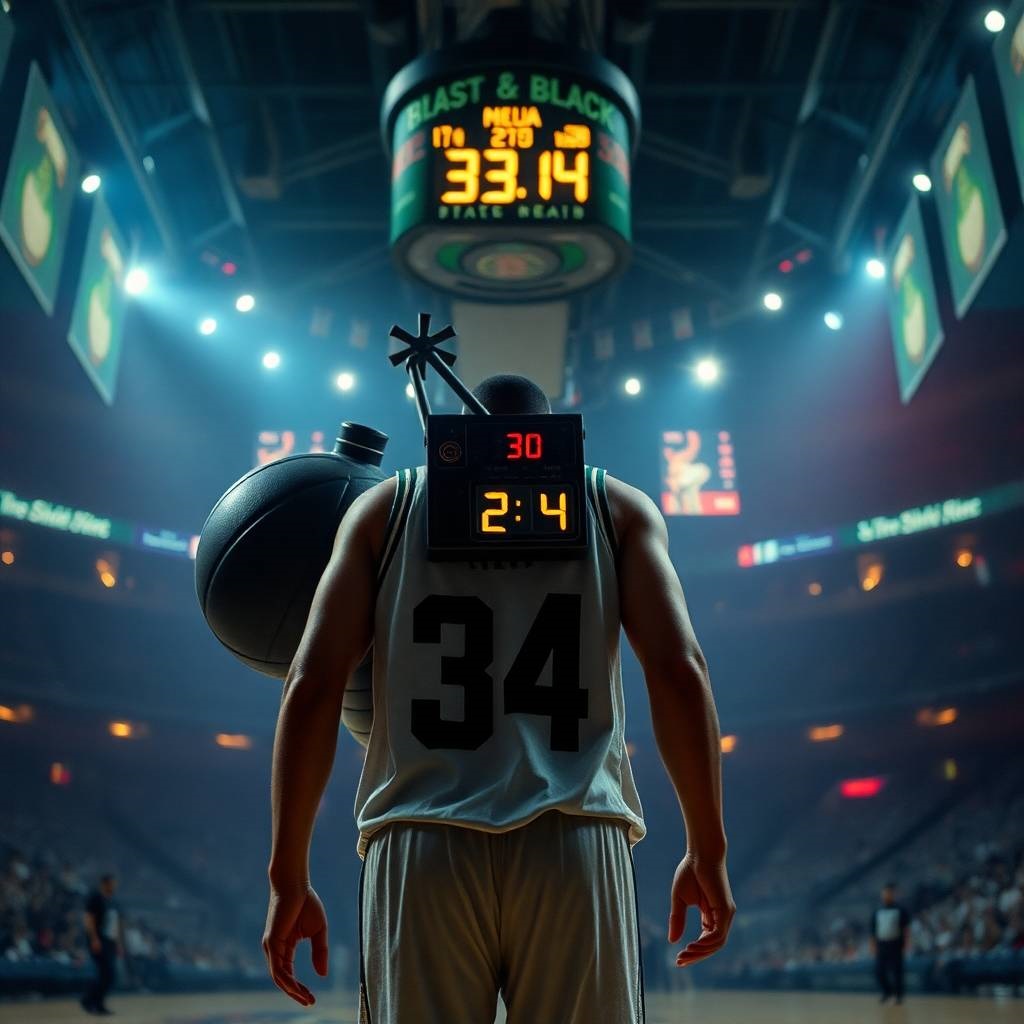The idea of trading Giannis Antetokounmpo to the San Antonio Spurs has surfaced in speculative discussions among fans and analysts. While the notion of pairing Giannis with the Spurs’ generational talent, Victor Wembanyama, might seem enticing on paper, a deeper analysis reveals that such a move would be illogical for both basketball and strategic reasons.
1. Clash of Playing Styles: Giannis and Wembanyama’s Incompatible Skill Sets
Giannis Antetokounmpo and Victor Wembanyama’s playing styles are fundamentally at odds, creating significant overlap and diminishing returns on the court.
a. Dominance in the Paint and Lack of Spacing
Giannis is a paint-dominant force who thrives on attacking the basket, leveraging his athleticism, length, and ball-handling to score efficiently at the rim. According to NBA stats, Giannis ranked second in the league in points in the paint (22.4 per game) during the 2024-25 season, with 68% of his shots coming within 10 feet. His game relies heavily on driving lanes and collapsing defenses to create opportunities for himself and teammates.
Wembanyama, while versatile, also commands significant space in the paint, both offensively and defensively. As a 7’4” unicorn, Wemby’s ability to protect the rim (3.6 blocks per game in 2024-25) and score inside (12.8 points in the paint per game) makes him a gravitational force in the low post. Pairing two players who both excel in the same area risks clogging the paint, reducing driving lanes, and forcing one or both to operate outside their comfort zones.
The Spurs’ offensive system under Gregg Popovich emphasized spacing, ball movement, and perimeter play to maximise Wembanyama’s versatility. Giannis, however, requires the ball in his hands to initiate drives, which could disrupt San Antonio’s flow. With Giannis’ limited outside shooting (27.7% from three in 2024-25), defences would sag off him, daring him to shoot and shrinking the floor for Wembanyama’s face-up game or pick-and-roll actions.
b. Ball-Dominant vs. Off-Ball Roles
Giannis is most effective as a primary ball-handler, orchestrating the offense and creating plays in transition or pick-and-roll scenarios. In Milwaukee, he averages 5.8 assists per game, often acting as the Bucks’ de facto point forward even though he is not at all good at it. Wembanyama, while not a traditional point centre, is developing into a hub for San Antonio’s offence, with his passing (4.1 assists per game) and ability to stretch the floor drawing comparisons to Nikola Jokić. The Spurs are much faster and more flexible than Giannis can even understand, let alone play with.
Pairing two players who thrive with the ball in their hands creates a dilemma: who runs the offense? Forcing Wembanyama into a strictly off-ball role would underutilize his playmaking and shooting, while relegating Giannis to a secondary role would neuter his impact as a downhill creator. The Spurs’ young core, including Devin Vassell and Keldon Johnson, already requires touches to develop, and adding Giannis’ high-usage style (31.2% usage rate) would stifle their growth and disrupt team chemistry.
c. Defensive Redundancy
Defensively, both Giannis and Wembanyama are rim protectors and versatile defenders capable of guarding multiple positions. Giannis’ 1.2 blocks and 1.1 steals per game complement his ability to switch onto guards or anchor the paint, while Wembanyama’s league-leading blocks and 1.3 steals showcase his unparalleled defensive range. However, pairing them creates redundancy rather than synergy. Sure, Giannis has been lazier and lazier since winning the chip in defence, but just how little can he do and get away with it?
The Spurs already rely on Wembanyama as their defensive anchor, using his length to erase mistakes and deter drives. Adding Giannis would leave San Antonio with two players competing for the same defensive responsibilities. This overlap could lead to confusion in rotations, especially against teams with strong perimeter attacks that exploit the lack of specialised wing defenders. Already the Bucks have suffered from Giannis not knowing what he is doing. This season 4th quarters without Giannis have been much better. The Spurs need complementary defenders—like 3-and-D wings—to maximise Wembanyama’s impact, not another paint-bound star.
2. Giannis’ Weaknesses and Poor Fit with the Spurs’ System
Beyond the stylistic clash, Giannis’ weaknesses make him a suboptimal fit for the Spurs’ roster and long-term vision.
a. Limited Outside Shooting
Giannis’ lack of a reliable jump shot is a glaring issue in San Antonio’s system. Popovich’s offenses have historically prioritized floor spacing to create driving lanes and open looks, as seen with players like Danny Green and Patty Mills during the Spurs’ championship runs. Giannis’ career 28.6% three-point shooting and 65.7% free-throw shooting allow defenses to employ a “wall” strategy, packing the paint and daring him to shoot.
In Milwaukee, Giannis benefited from shooters who stretch the floor and punish sagging defenders. In fact the Bucks were again the best 3point shooting team in the NBA. The Spurs, however, lack consistent outside threats, with Vassell (36.1% from three) being their primary perimeter weapon. Pairing Giannis with Wembanyama, who shoots 34.6% from three, would not provide enough spacing to prevent defences from collapsing, limiting the effectiveness of both stars.
b. High Usage and Developmental Impact
The Spurs are in a rebuilding phase, focused on developing young talent like Wembanyama, Vassell, Jeremy Sochan, and rookie Stephon Castle. Giannis’ high-usage style would demand a significant share of possessions, reducing opportunities for these players to grow. For example, Vassell’s 19.5 points per game and Castle’s role as a secondary creator would take a backseat to Giannis’ 30.1 points per game and ball-dominant approach.
San Antonio’s long-term goal is to build a cohesive unit around Wembanyama, not to pivot to a win-now strategy that sacrifices youth for a star who may not align with their timeline. At 30 years old, Giannis is in his prime, but his peak may not coincide with the Spurs’ contention window, projected to open when Wembanyama reaches his mid-20s.
c. Injury Concerns and Physical Toll
Giannis’ game relies heavily on athleticism and physicality, which takes a toll on his body. He has missed an average of 12 games per season over the past three years, including a calf injury that sidelined him for the 2024 playoffs’ first round. The Spurs, already cautious with Wembanyama’s minutes due to his unique frame, cannot afford to invest in another injury-prone star whose style invites wear and tear.
Moreover, Giannis’ reliance on driving and rim attacks pairs poorly with Wembanyama’s need for a clean paint to operate. The physicality of Giannis’ game could lead to collisions or crowded lanes, increasing the risk of injuries for both players.
3. Strategic and Financial Considerations
Beyond on-court fit, trading for Giannis poses significant strategic and financial challenges for the Spurs.
a. Trade Cost and Roster Depletion
Acquiring Giannis would require an astronomical trade package, likely including multiple first-round picks, young talents like Vassell or Sochan, and salary fillers. The Spurs’ treasure trove of draft capital (including picks from Atlanta and Chicago) is a key asset for building around Wembanyama, and depleting it for Giannis would limit their ability to add complementary pieces.
Losing players like Vassell, a 24-year-old scorer with two-way potential, or Sochan, a versatile defender, would also weaken the Spurs’ depth. Milwaukee, in turn, would demand proven assets, leaving San Antonio with a top-heavy roster ill-equipped to compete against deeper teams like Denver or Boston.
b. Salary Cap Constraints
Giannis’ supermax contract, with a $57.6 million cap hit in 2025-26, would hamstring the Spurs’ flexibility. San Antonio currently operates with significant cap space, allowing them to sign role players or take on bad contracts for draft compensation. Adding Giannis’ deal, alongside Wembanyama’s eventual extension, would lock the Spurs into a luxury-tax situation before their young core matures, limiting their ability to build a balanced roster.
c. Cultural and Coaching Fit
Popovich’s system thrived on selflessness, ball movement, and role clarity, as exemplified by the 2014 championship team. Giannis, while a willing passer, is accustomed to a Bucks system tailored to his strengths, with shooters and spacers surrounding him. Asking him to adapt to a motion-based offence at this stage of his career could lead to friction, especially given the Spurs emphasis on collective play over individual dominance. Giannis has not been known for basketball IQ or flexibility. In fact he seems to not even understand advanced NBA basketball systems.
4. Better Alternatives for the Spurs
Instead of pursuing Giannis, the Spurs are better served targeting players who complement Wembanyama’s skill set. A playmaking guard like Trae Young or a 3-and-D wing like Mikal Bridges would address San Antonio’s needs for perimeter creation and defensive versatility. These players would enhance Wembanyama’s strengths without overlapping his role, creating a more balanced and scalable roster.
Alternatively, the Spurs could continue developing their young core and leveraging their draft capital to acquire ascending talents or high-value picks. With Wembanyama as the cornerstone, San Antonio has the luxury of patience, and chasing a superstar like Giannis prematurely risks derailing their long-term vision.
Sorry to bust your bubbles
Trading Giannis Antetokounmpo to the San Antonio Spurs is a tantalizing but deeply flawed idea. The clash of playing styles between Giannis and Wembanyama, rooted in their paint dominance, ball-handling demands, and defensive redundancy, would create more problems than solutions. Giannis’ weaknesses—limited shooting, high usage, and injury concerns—further exacerbate the poor fit, while the trade’s cost, financial burden, and cultural mismatch make it a strategic misstep. The Spurs’ focus should remain on building a cohesive, complementary roster around Wembanyama, not chasing a superstar whose game doesn’t align with their vision. For now, Giannis belongs in Milwaukee, and the Spurs should keep their sights on a future tailored to their generational talent.





